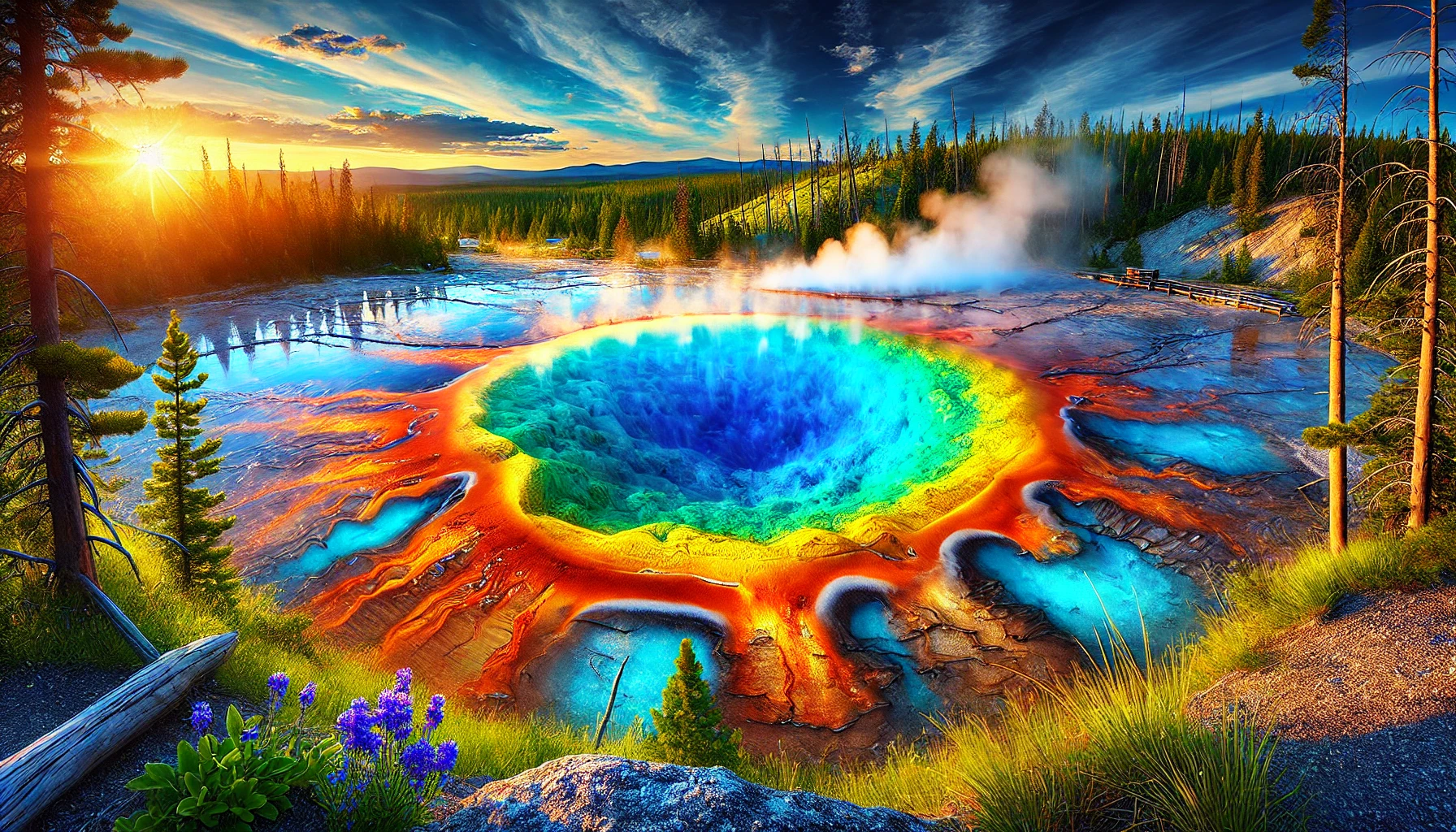Yellowstone National Park, a sanctuary of natural wonders, is home to the stunning Morning Glory pool, one of the park’s most photographed thermal features. This hot spring is renowned for its extraordinary colors and serene beauty, drawing visitors from around the globe.
The Natural Artistry of Morning Glory Pool
Morning Glory pool, named after the morning glory flower for its striking resemblance in shape and color, showcases a vivid spectrum of colors from deep blue in the center to orange and yellow at the edges. These colors are due to thermophilic bacteria thriving in the mineral-rich, hot waters of the pool. The varying temperatures across the pool create a stunning visual effect, reminiscent of a painter’s palette.
The Science Behind the Colors
The pool’s intense colors are not just a feast for the eyes but also a subject of scientific study. The colors indicate the presence of different microorganisms adapted to varying temperatures. This makes Morning Glory an excellent site for studying microbial life in extreme environments, contributing to our understanding of astrobiology and the potential for life on other planets.
A Call to Preserve Its Beauty
Over the years, the Morning Glory pool has faced threats from tourist impact, including debris thrown into the pool, which affects its temperature and, consequently, its vibrant colors. Preservation efforts are crucial to maintaining its unique beauty and scientific value. Visitors are encouraged to respect the natural environment and contribute to the ongoing efforts to preserve this natural wonder.
A Must-Visit for Nature Enthusiasts
For those planning a visit to Yellowstone, the Morning Glory pool is a must-see. Its unique natural beauty offers an unparalleled opportunity for photography, nature observation, and a chance to witness the delicate balance of an extreme ecosystem.
Conclusion
The Morning Glory pool is more than just a scenic spot; it is a vibrant emblem of nature’s complexity and a reminder of the delicate interplay between life and the environment. It encourages both awe and respect, prompting us to think about our impact on the natural world.

